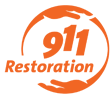DIY Water Damage Repair: Step-by-Step Guide
Water damage can be a serious issue for homeowners. It can cause significant damage to your property and even pose health risks if not addressed promptly. While some situations may require professional assistance, many water damage problems can be addressed with DIY repairs. In this article, we’ll provide you with a step-by-step guide to help you tackle water damage repair on your own.
-
Assess the Damage
Before you start repairing any water damage in a property, it’s crucial to assess the extent of the damage. This process involves a careful examination of the affected areas to identify any standing water and determine which parts of the property have been affected. You should also look out for any visible signs of mold growth, discoloration, or peeling paint, as these can indicate areas where water damage has occurred.
When assessing water damage in a property, it’s essential to pay attention to details such as the extent of the water saturation, the type of water involved (clean, grey, or black), and the duration of exposure. This information will help you determine the appropriate course of action for repairing the damage, including whether you need to remove any affected materials or hire a professional restoration service.
It’s also important to note that water damage can have long-term effects on a property, such as structural damage and the risk of mold growth, so it’s essential to take the necessary steps to prevent future damage. This might include repairing any leaks, improving ventilation in the property, and ensuring proper drainage to minimize the risk of water damage.
-
Turn Off the Water
If you’re planning to fix water damage on your own, the first step is to turn off the water source before you start any repairs. This is an essential step as it helps prevent additional water from entering the affected area, making it easier for you to manage the damage. By turning off the water source, you can also avoid any potential safety hazards such as electrical shocks, as water and electricity are a dangerous combination. Once you’ve turned off the water source, you can proceed with your DIY repairs.
-
Remove Standing Water
When it comes to water damage repair, one of the first things you should do is remove any standing water to prevent mold growth and further damage to your property. Using a wet/dry vacuum can help remove water from surfaces, such as floors and carpets. For larger amounts of water or more severe damage, it’s best to call in a professional water removal company. Removing standing water is a critical step in the repair process, as it can prevent structural damage and reduce the risk of mold growth.
-
Dry Out the Affected Area
After removing the water, drying out the affected area is crucial in preventing further damage and mold growth. You can use fans and dehumidifiers to increase air circulation and reduce humidity. Open windows can also help to let fresh air in. In some cases, the damage may be severe, and you may need to remove damaged materials such as drywall or insulation to ensure proper drying. You can also use a moisture meter to check for any moisture that might be left behind.
-
Clean and Disinfect
Cleaning and disinfecting the affected area is crucial to prevent mold growth and ensure the safety of your living space. You can make a solution of bleach and water to clean hard surfaces such as walls and floors. The recommended ratio is one cup of bleach per gallon of water. Wear protective gloves and clothing while cleaning, and make sure to ventilate the area well. For soft materials such as carpet and upholstery, it’s best to hire a professional cleaning company that specializes in water damage restoration. They have the proper equipment and expertise to thoroughly clean and disinfect these materials.
-
Repair or Replace Damaged Materials
If the water damage has caused structural damage or damaged materials such as drywall or flooring, you’ll need to repair or replace them. This step may require some DIY skills, depending on the extent of the damage. Remove any damaged materials and replace them with new ones, following the proper installation procedures to prevent future water damage. For instance, when replacing drywall, ensure that it is installed correctly and sealed with paint or another coating that can resist moisture.
-
Address Underlying Issues
If you’ve experienced water damage, it’s important to identify the cause of the damage to prevent future incidents. In many cases, water damage is caused by underlying issues such as leaky pipes or poor ventilation. To prevent future water damage, it’s essential to address these issues. Consider hiring a plumber to inspect your pipes and fix any leaks. Additionally, install proper ventilation in high-humidity areas such as bathrooms and kitchens to reduce moisture buildup. Taking these preventative measures can save you from costly repairs in the future.
Conclusion
Water damage repair can be a daunting task, but with this step-by-step guide, you can tackle it on your own. By assessing the damage, turning off the water, removing standing water, drying out the affected area, cleaning and disinfecting, repairing or replacing damaged materials, and addressing underlying issues, you can restore your property and prevent future water damage. If you need assistance with damage restoration give our IIRC Certified specialist a call today .
FAQs
Q: How soon after water damage can mold start to grow?
A: Mold can begin to grow within 24-48 hours after water damage.
Q: Is it safe to remove mold myself after water damage?
A: It’s possible to remove small amounts of mold yourself, but for larger infestations, it’s recommended to hire a professional mold removal company to ensure safe and effective removal.
Q: Will my insurance cover the cost of water damage repairs?
A: Coverage for water damage repairs will depend on your insurance policy. Some policies may cover water damage if it’s the result of a covered peril, such as a burst pipe. It’s important to carefully review your policy and speak with your insurance company to determine coverage.
Q: When should I call in a professional for water damage repairs?
A: If the water damage is extensive, involves contaminated water, or poses a risk to your health or safety, it’s best to call in a professional water damage restoration company. They have the tools and expertise to properly assess and address the damage.


